Studio Visit
Photographer Edward Burtynsky on Creating Immersive Experiences and How to Find Your Aesthetic Voice in a World Flooded with Images
The acclaimed Canadian artist discusses art and the environment.
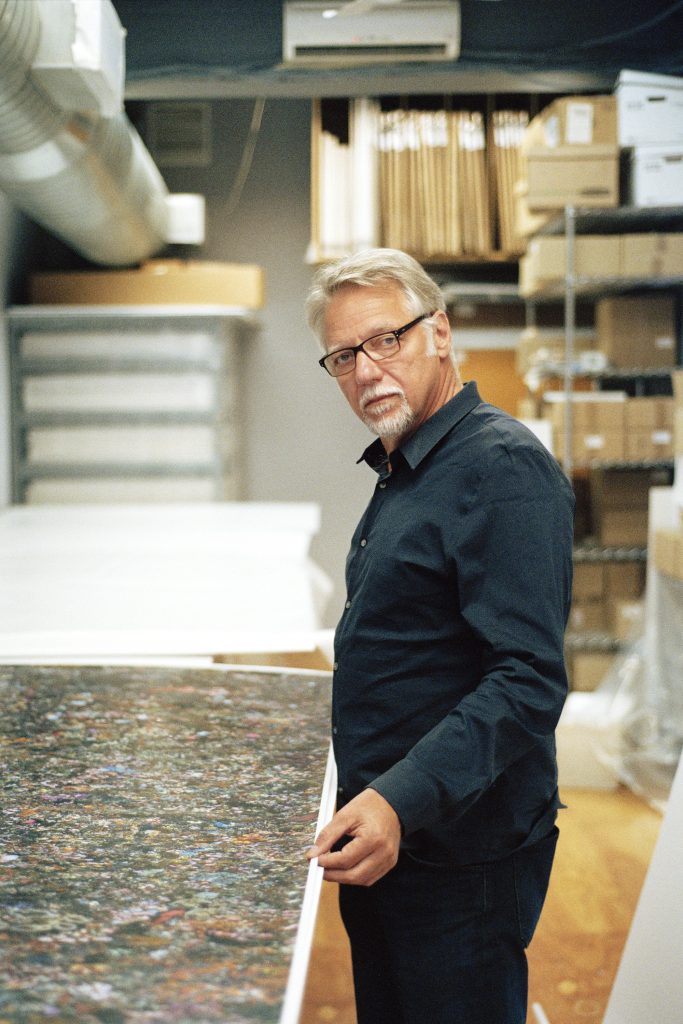
The acclaimed Canadian artist discusses art and the environment.

Kate Brown

Canadian artist Edward Burtynsky is sort of like a sleuth: He produces evidence of humans’ impact on the planet. Gaining access to hard-to-reach places in our world—tar sands, nickel mines, sawmills, or shipyards—Burtynsky culls poignant imagery to show us how we have transformed the earth around us at a vast and debilitating scale. There is a cost to modern life and its massive, if usually just out of view.
At a time when the climate is finally starting to rear from the effects of industry, his work has become even more urgent. It is no great surprise then the artist, who is based in Toronto, was recently awarded this year’s Outstanding Contribution to Photography by the World Photography Organization. His work will be on view at the 2022 Sony World Photography Awards exhibition at Somerset House in London beginning April 15, 2022.
Artnet News spoke to Burtynsky about finding his voice in a world flooded with images and his ambitions to make immersive experiences.
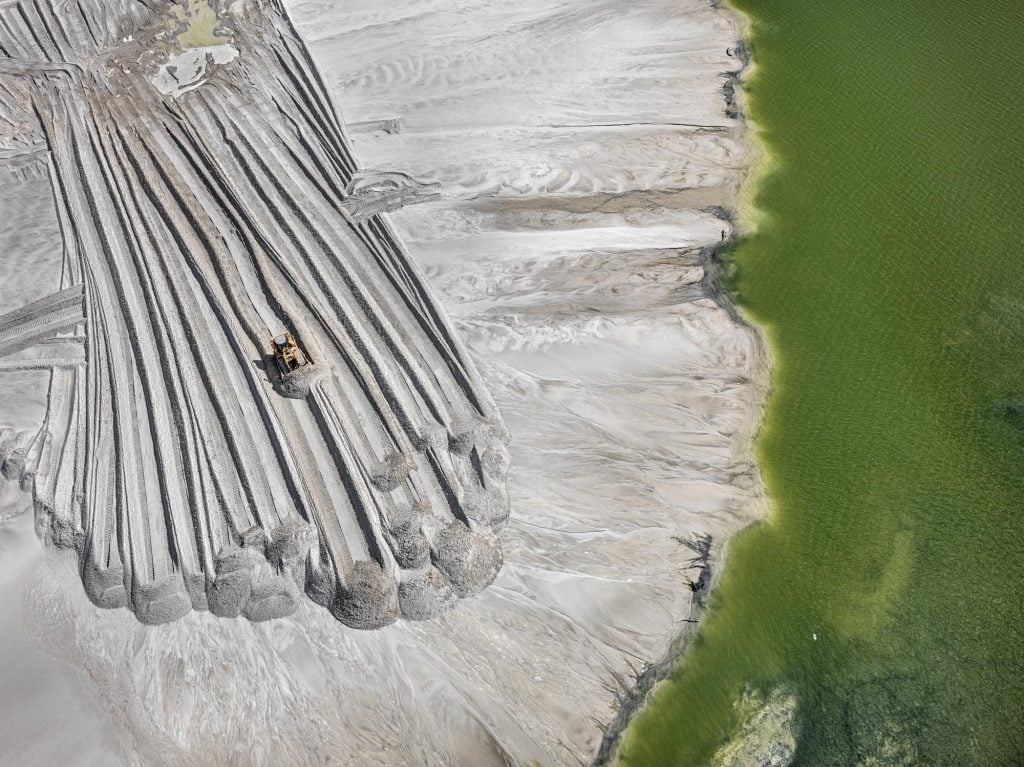
Edward Burtynsky, Phosphor Tailings Pond 4 Near Lakeland Florida, USA (2012). © Edward Burtynsky, courtesy of Galerie Springer, Berlin, and Nicholas Metivier Gallery, Toronto.
When did you start photographing the landscape and the environment? Was there a pivotal moment for you?
I became interested in that subject over 40 years ago when I realized that these spaces were something that very few people got a chance to see—places in nature where the things that we use every day come from. It was not necessarily from a concern about the environment as much as a consideration of the yin and yang of our existence. Even though we see our cities, live in our homes, drive our cars, and get onto our planes, we don’t see the other side of it. I wanted to turn my camera towards that. Then, when I started my work on China in particular, and looking at how China was ramping up to become the manufacturer for the world, my concerns for the environment grew dramatically. Looking at the consequences to their landscapes, water, air, and health, I realized what I was seeing was the scale of this current version of the Industrial Revolution. It was at that point that I really became very concerned that the whole human enterprise was cascading into dire consequences.
Concern for our impact on the environment has gone from a scientific backwater to the mainstream in the past years. How have you been observing this shift?
I’m happy that a voice like Greta [Thunberg] has been able to rise above the din of conversation. Her progenitor was Severn Suzuki at the 1992 Rio Summit when she was 13, about what industry and governments were allowing to happen to the planet. I do wonder sometimes where the university students are who are that next generation of youth. It is very much that group that is currently in the early 20s who are really going to be inheriting a problem. Yet there hasn’t been a strong voice coming from there yet.
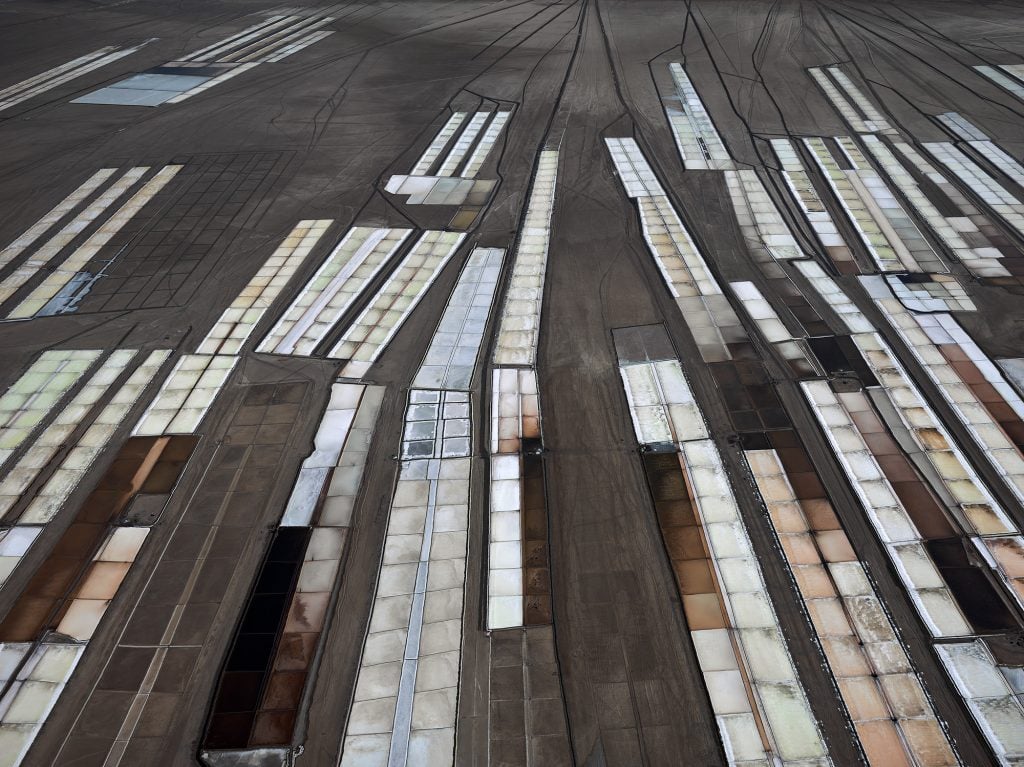
Edward Burtynsky, Salt Pans #18, Little Rann of Kutch, Gujarat, India (2016). © Edward Burtynsky, courtesy of Galerie Springer, Berlin, and Nicholas Metivier Gallery, Toronto.
What would you advise young artists and photographers trying to find their voices in a time of social media and when the world is flooded with so many images?
The image has become such a ubiquitous handshake between us that we’ve all become fairly sophisticated in using images to communicate with each other. I think it’s a powerful form that’s not going away and will only become more powerful. Artists are able to take ideas that are meaningful to them, and find a way to visually manifest those ideas in a way that communicates to others—which is very different from using a camera on your phone to photograph your dog, a bunch of friends at a party, or to remember the good times you had or where you visited. I think when you start using photography for the ideas of how you feel about the world and your role in it, you make images work together to express those deeper feelings and thoughts. This is where artists should move their craft in today’s world, because I think the audience is sophisticated enough to follow.
Could you share a bit your process for making images and how that’s been transformed with new technologies available?
I always liked a slightly elevated vantage point because my images were often of landscapes—so I needed to find the side of the hill without trees in front of it, or a roadside where I can pull over and stand, where there is no foreground noise. I was known to climb up on one of my old clunker cars and stand on the roof with my tripod to get above things to photograph. As time went on, I started renting things like bucket lifts, which people working on power lines use. I started using helicopters when I wanted to go higher. In 2010, I started working with drones that can carry a big camera like my Hasselblad and stabilize it, so that I can photograph from 1,000 feet away by looking through a video signal of it on a monitor on the ground. I use technology to put the position where I want it. As digital tools evolved, they gave me more and more opportunities to do that.
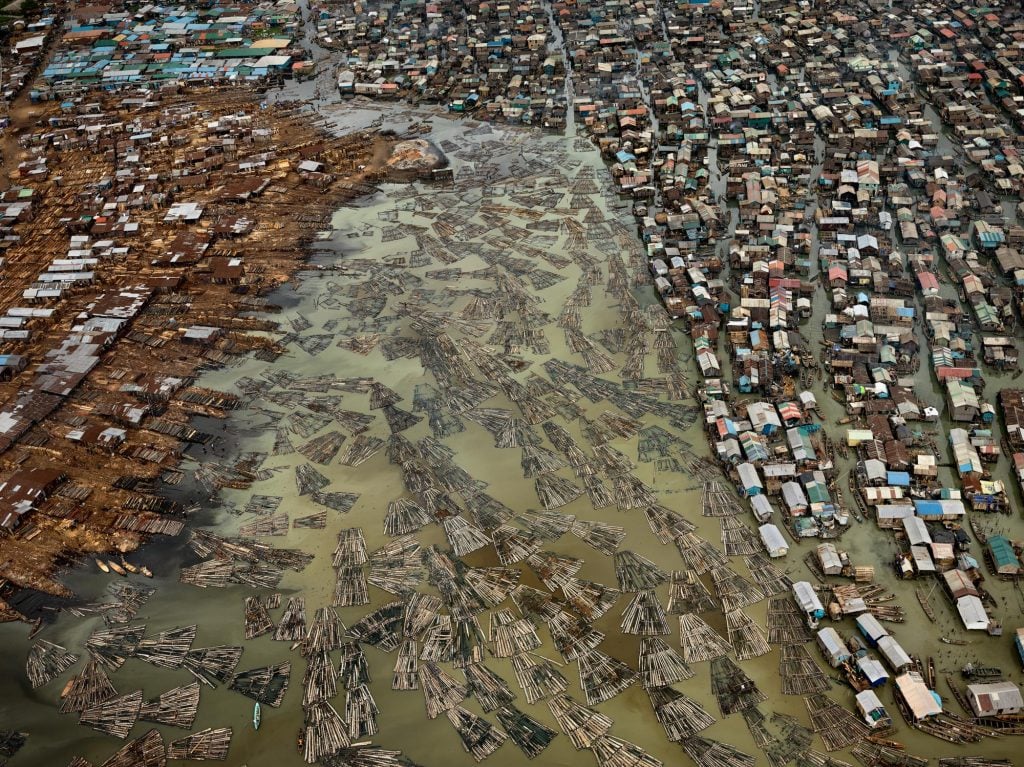
Edward Burtynsky, Saw Mills #2, Lagos, Nigeria (2016). © Edward Burtynsky, courtesy of Galerie Springer, Berlin, and Nicholas Metivier Gallery, Toronto.
Your images are so beautiful and yet they tell a sad story about destruction. How do you think about this?
In a way, what we are doing is creative destruction. The lives that we live with our cities, our skyscrapers, our trains, planes, and automobiles, all of that has another side to it. I am just showing the other side to our businesses-as-usual. It’s not only sad because we’re doing it, but it is the scale at which we’re doing it, and the amount of biodiversity and natural space that has been pushed back as we continue to succeed in this consumer-capitalist model for the whole world. That model has real consequences. We’re seeing that the model needs to be tweaked, because the separation between those who have and those who do not have is getting wider and the disparities are getting more challenging. I think somewhere in the future, there will be a course correction that we’re going to have to go through.
Who are some artists, writers, or thinkers that are inspiring you and your work at the moment?
One of one of the writers has been inspiring to me currently is John McPhee. I have often been able to pull from his stories for my work. An artist that I quite like these days is Olafur Eliasson. I am fascinated with how he is dealing with issues around climate and outdoor sculpture, as well as technology and the environment.
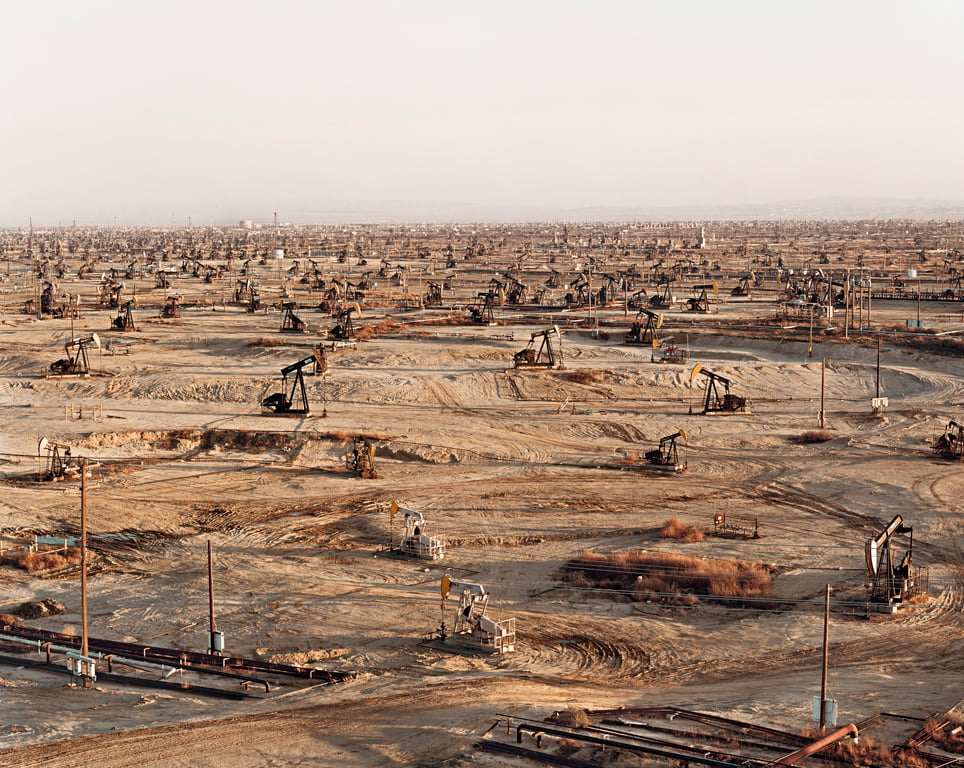
Edward Burtynsky, Oil Fields #2 Belridge, California, USA (2003). © Edward Burtynsky, courtesy of Galerie Springer, Berlin, and Nicholas Metivier Gallery, Toronto.
What is your studio process like these days?
It’s never full-on since we are working on rotations [for social distancing]. I am not a studio photographer and my studio is the world at large. I have a magnetic wall where I’m constantly looking at prints, color correcting, and editing the images that are going to make it into my work. That is all being done on a weekly basis. I’m experimenting in augmented reality and photogrammetry as a way to catch to capture objects photographically in a third dimension. I am not 100 percent sure how I’m going to deploy it. But I’m always in a state of experimenting and play when I am at the studio.
Since your work needs to be so precise, I wonder, do you listen to music or the radio? How do you get into your creative space when you’re working?
I will listen to music at times, but my process isn’t really dependent on that. I think in most cases, it’s a kind of studied and researched approach to working. My early work was about discovery: I would get in my car and just head to areas where I knew there was a quarry or mining, and talk my way into these places. Now that I am working internationally, I can’t go there and explore and hope I find something. It’s more targeted. Once I am out there shooting and making the work, the heavy lifting of where, why, and what is already done. When I’m there, I’m trying to solve how, and that’s mostly troubleshooting. It takes about four months to organize a three-week shoot. Probably 20 to 25 percent of my time is involved in actual production and shooting, and then the rest of it is in research, making exhibitions, editing, and so on.
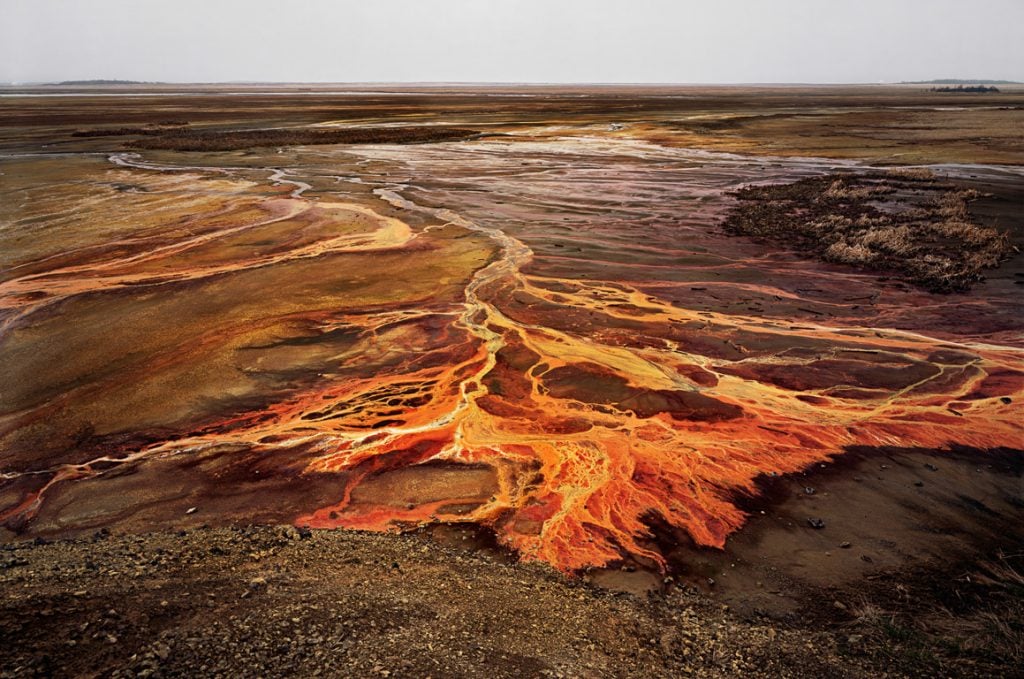
Edward Burtynsky, Nickel Tailings #30 Sudbury, Ontario (1986). © Edward Burtynsky, courtesy of Galerie Springer, Berlin, and Nicholas Metivier Gallery, Toronto.
What are your most indispensable tools? Are there a couple of cameras that you’d never be caught without?
The two key things are a high-resolution medium-format camera—a Hasselblad or a Phase. Another indispensable tool is my actual computer, where I’m looking at the images during the shoots and making sure that I’m on the right track, and that the technology is performing the way it’s supposed to. I work with excellent tripods. Most of everything I do is with a camera on a tripod, or I am in the air using gyrostabilizers to be able to shoot from fixed-wing planes or helicopters and keep the images sharp.
What is on your task list for tomorrow? For next month?
I’m trying to get all the technology together for this immersive experience. In the next few months, I’m trying to create a prototype with all the tools that I want to engage with in this immersive experience, and test it out to make sure I’m on the right path. I am working with musicians and producers to create the music for another piece, and finessing all of the paintings, the imagery, the video, and the stills. It is called In the Wake of Progress, and I intend to be releasing it in 2022.